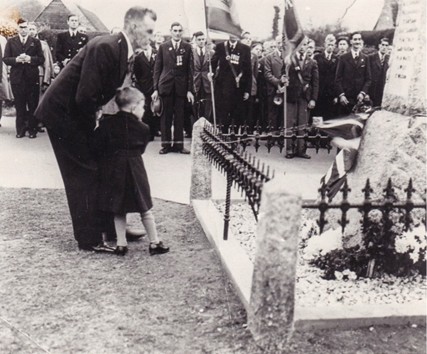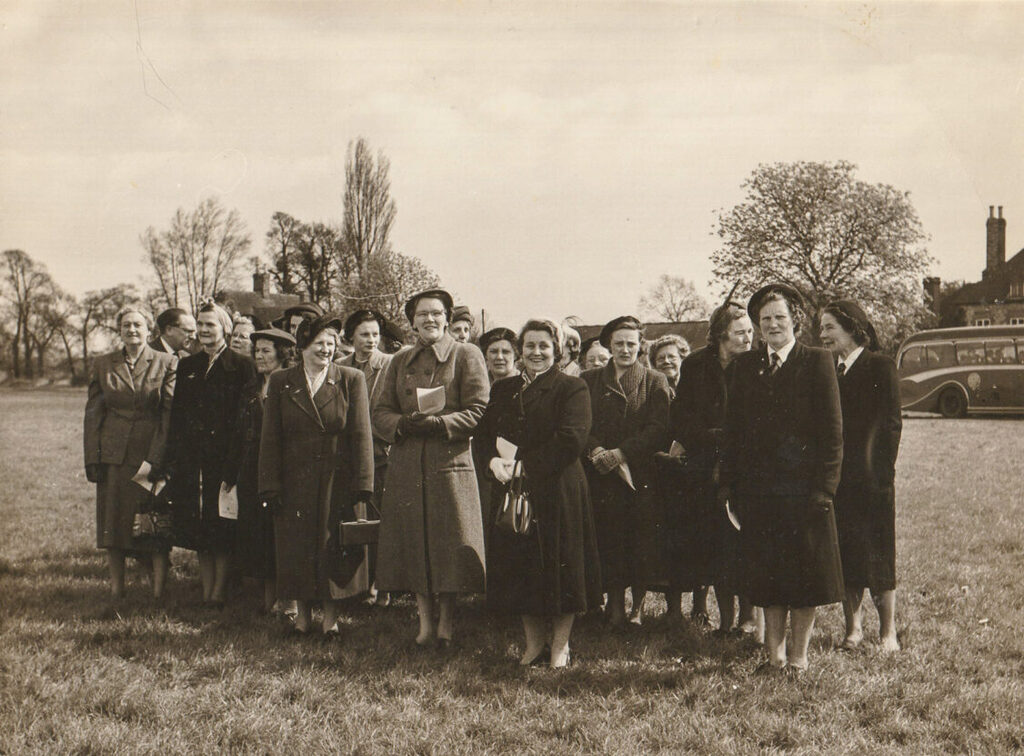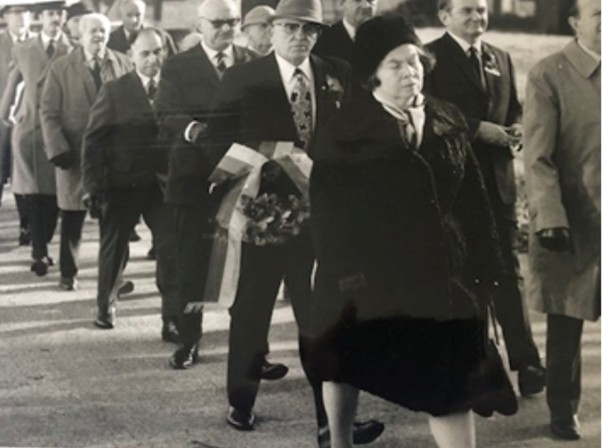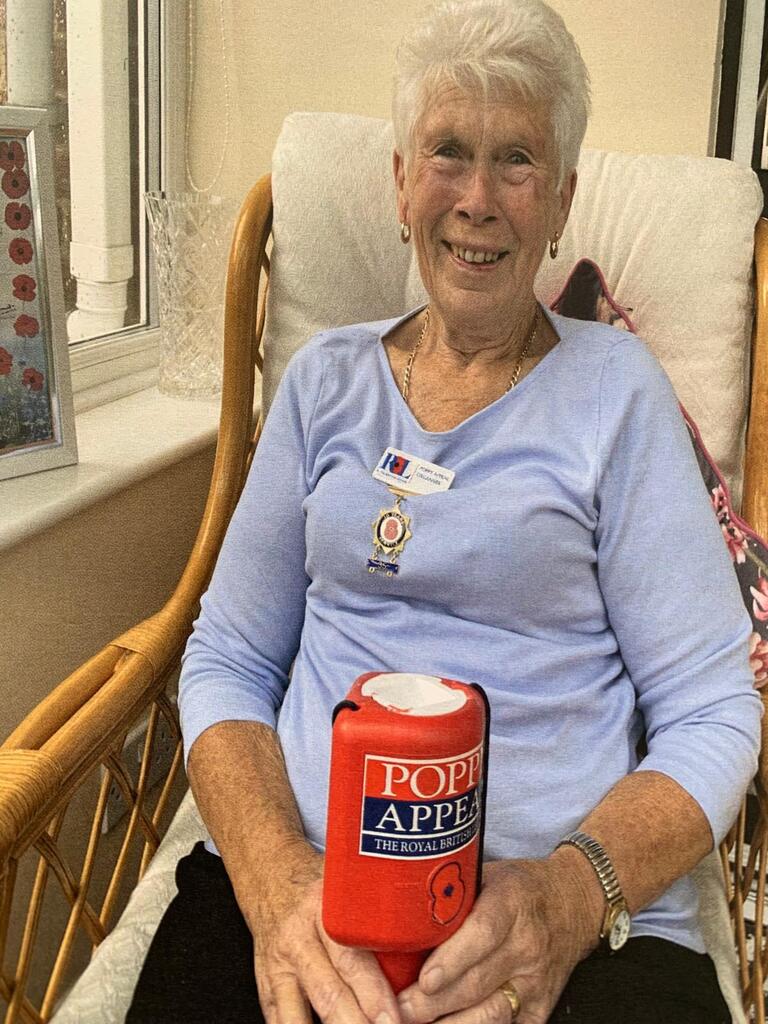
The British Legion was founded on 15 May 1921 as a voice for the ex service community and bringing together four organisations: the Comrades of the Great War, the National Association of Discharged Sailors and Soldiers, and the National Federation of Discharges and Demobilised Sailors and Soldiers, and incorporated the fundraising department of the Officers’ Association.
Field Marshal The 1st Earl Haig (1861–1928), British commander at the Battle of the Somme and Passchendaele, was one of the founders of the Legion. Lord Haig served as the president of the British Legion until his death.
A royal charter was granted in 1925, accompanied by invaluable patronage from royal circles.
A report in the Berks & Bucks Advertiser, 18 November 1927, reported that in Warborough and Shillingford the organisation was known as the Ex-Servicemen’s Club until 1927 when it was planned to continue in conjunction with a local branch of the British Legion. At the annual dinner in that year, held at the New Inn, this question was the chief topic of discussion. A guest, Ex-Police Inspector Hewitt, delivered an address on the subject on behalf of the Legion. Initially, the plan was to disband the Club, rather than it be part of the British Legion. Ex-Police Inspector Hewitt explained that he held several national and local offices within the Legion and explained that the BL was an amalgamation in 1921 of the four organisations of ex-servicemen. At that time there were nearly 3,000 branches in the country as well as in Northern Ireland and the Irish Free State. The Legion had thousands of pounds waiting to be spent that belonged to ex-servicemen. He wanted the Ex-Servicemen’s Club to join the Legion but that it had no desire to break up or interfere with the Club. They might carry on with their Club and make the British Legion a side line or make the Club a sideline to the British Legion. There was fierce objection and the term “You cannot serve under two flags” was mentioned.
Subsequent newspaper reports, starting in 1928, refer to the British Legion so it must be assumed that the above option was taken up, subsequent to the 1927 meeting.
(source FindMyPast)

1933 – Dedication of the Branch Standard
The names of elected officials were published in the Berks & Oxon Advertiser on 28 October 1938 President was Rev Caldicott, Chairman Mr J R Warburton and vice chairman Mr H Gale. The list of officials includes many well known local names: Bullock, Bailey, Vaughan, Belcher, Green, King, West, Norris, Kirby, Baker, Briginshaw, Absolom and Vaughan. (source FindMyPast)
Many fundraising events were held over the years including Whist Drives and Smoking Concerts.
During the Second World War it was active in civil defence providing officers to the Home Guard

In 1948 the 1939-1945 Roll of Honour was unveiled.
Six-year-old Brian Chainey, whose father Private Gilbert Chainey had died in the war, carried out the unveiling.

The Women’s Section on the Green in 1967
In 1973 the then local President, Denys (Denny) Jameson, had the idea that to mark our joining the European Union some Germans should be invited to join the local Remembrance Day service. Two representatives of an organisation for German service widows attended, bringing their own wreaths. One of them became good friends with Denny and his wife, Romey, and they visited them in Germany.

Remembrance Day 1973 – Visit from V.D.K. Germany
The Royal British Legion membership grew rapidly from veterans of the Second World War, reaching three million in 1950. It declined to a half million elderly survivors by 2003.
In 2013 the Oxford Mail reported that: “While their members have glowing military backgrounds and a proud history of serving their country, organisers say they are getting old and not being replaced.
Young people may still use the organisation’s clubs – but only in many cases to get a cheap pint.”
The Legion began research in that year to investigate the cause of this decline and establish ways to counteract it. (source: www.thirdsector.co.uk). Several attempts have been made to find out when the Warborough and Shillingford branch closed, including to the Royal British Legion itself, but sadly without success. We know the Women’s Section, which closed in 2000 survived longer than the Men’s Section.
Several attempts have been made to find out when the Warborough and Shillingford branch closed, including to the Royal British Legion itself, but sadly without success. We know the Women;s Section, which closed in 2000 survived longer than the Men’s Section.
In 2021 the Parish Magazine reports on a special service at St Laurence Church for the laying up of the Standard¹ of the Warborough and Shillingford Legion. The Standard was carried by Michael Bond who had been Standard Bearer for 15 years and had carried the Standard at National and County Conferences. He was escorted by Mark Perry and Roger Wilkinson. Ten Branch Standards from Oxfordshire and two County Standards were in support, one carried by Ken Hunter. The Parade Marshal was Alf Levern.
The Branch President, Denys Jameson, presented the Standard to the Vicar, Rev Sue Booys, for the Church to look after it. The Branch Chairman, Geoffrey Turner, read the lesson and The Vicar gave an address and told of the work of the Branch in Warborough which was formed in 1927. From this it must be assumed that the branch closed sometime before 2021. If anyone can confirm the closure date perhaps you would let us know so that this article can be updated. (wslocalhistory@gmail.com)
Today, perhaps, the Royal British Legion is best known for the yearly Poppy Appeal and Remembrance services. For many years village resident Mrs Lilian Leach has organised the annual Poppy Appeal Collection for Warborough and Shillingford and has raised, over this time, many thousands of pounds.

Lilian Leach
Mrs Leach has received a well-deserved award for her work and was presented with a special badge in recognition of her service to ‘The Legion’ for over 45 years.
¹ The laying up of RBL standards involves specific guidelines and permissions:
Authority: Permission for laying up standards must be obtained from the relevant Church authorities under Church Faculty Law.
Dedication: Standards are dedicated before use and are laid up in sacred or public buildings after service.
Military Standards: Military standards, guidons, and colours must remain in place until they completely disintegrate, and disposal requires Ministry of Defence sanction.
Researched & written by Sandy West – October 2025